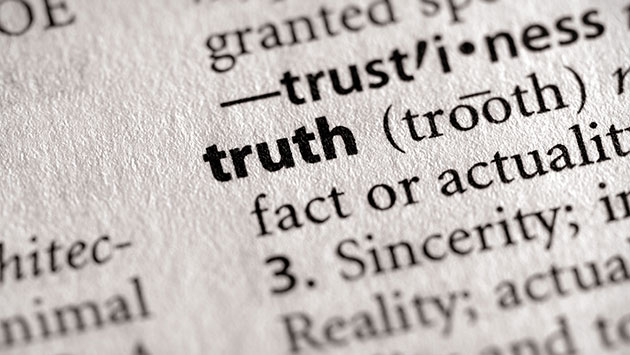You don’t always hear the bubble burst. Often, it’s more a gradual escaping of air, signaled by nothing more than the occasional queasy feeling you bat away: One house for sale on the block, oh well. Two, three—maybe just a robust market? Five, six, seven—and suddenly everyone’s underwater and the sheriff is at your door.
That’s kind of how it’s feeling in the digital media business. For a few years now, investors have been pouring money into online news with the kind of fervor that once fueled the minimansion boom. But in the past year, the boarded-up windows have started showing up: The Guardian, which bet heavily on expanding its digital presence in the United States, announced it needed to cut costs by 20 percent. The tech news site Gigaom shut down suddenly, with its founder warning that “it is a very dangerous time” to be in digital media. Mobile-first Circa put itself on “indefinite hiatus.” Al Jazeera America, once hailed as the hottest thing in bringing together cable news and digital publishing, shut down and laid off hundreds of journalists.
Pop.
And it’s been getting worse. As the New York Times’ John Herrman put it, “in recent weeks, what had been a simmering worry among publishers has turned into borderline panic.” Mashable, which had made a big investment in news and current affairs, laid off dozens of journalists and pivoted to a new, video-heavy strategy. Investor darling BuzzFeed fought reports that it had slashed earnings projections by nearly 50 percent. Salon laid off a string of veteran staffers. Yahoo put its core business, including its news and search features, up for sale.
Pop. Pop.
Here’s the thing: It was not hard to see this coming. For years now, smooth-talking guys (yes, mostly guys) with PowerPoint decks have offered up one magic formula after another to save the business of news. Citizen journalism—all the reporting done by users, for free, with newsrooms simply curating it all. “Brand You”—each journo out there on her own, drawing legions of followers to her personal output. (Even Andrew Sullivan couldn’t make that work.) Viral headlines—every news shop Upworthy-ing its way into the Facebook swarm. Aggregation, curation, explainer journalism, explainer video, branded content, text bots, video, branded video, branded virtual reality video…each fueling the hope that here, at last, was the way to make news profitable again. A whole class of future-of-news pundits made a living pontificating about how “legacy media” were getting their lunch eaten by digital-native startups.
And the investor money kept coming. BuzzFeed, Vox, Vice, Fusion, Mic (not to mention their 1stGen cousins Salon, Slate, Huffington Post, and Gawker)—for a while they all were too fast to fail, hiring Twitter-famous names out of established newsrooms, rolling out sexy technology systems, and exploding watermelons on live video. As Josh Topolsky, a veteran of digital media (most recently at Bloomberg) wrote the other day, “I can tell you from personal experience over the last several months, having met with countless investors and leaders of media companies and editors and writers and technologists in the media world that there is a desperate belief that The Problem can be solved with the New Thing. And goddammit someone must have it in their pitch deck.”
But while a ton of great work has come (and continues to come) out of all the New Things, none of them have answered the burning question of how to pay for journalism—especially the public-interest, watchdog, feet-to-the-fire kind that democracy needs to function. For one thing, all the big new digital shops today employ, between them, a few thousand journalists—compared with the ten-thousand-plus laid off in the great retrenchment of 2007 to 2010. For another, like virtually every other hot property across the internet, digital media startups are better at growing than at showing a profit. And since a profit is what the people supplying those giant piles of cash are ultimately looking for…
Pop. Pop. Pop.
Mother Jones is a nonprofit—precisely to avoid this fate. Tax-deductible donations from readers give us stability.
Remember when Chris Hughes put The New Republic up for sale earlier this year? His letter to TNR staff subtly blamed the very same people it was addressed to: “I will be the first to admit that when I took on this challenge nearly four years ago, I underestimated the difficulty of transitioning an old and traditional institution into a digital media company in today’s quickly evolving climate.”
Bullshit. “Transitioning” was not The New Republic‘s main challenge. Refusing to work on, with, and for the internet was once a pervasive problem in news organizations, but while vestiges of that still linger, it is no longer what keeps publications from succeeding financially.
What keeps them from making money now is that online advertising pays pennies. (Actually, a penny per reader is pretty good these days—CPM, or “cost per thousand” ads, is often far less than half that.) And there are a ton of people competing for those fractions of a penny—including Google and Facebook, which collectively pulled in a whopping 85 percent of new ad spending in the first quarter of this year. The only way to make ends meet in that environment is to turn up the fire hose of fast and cheap content or rent your pages out to native advertising (sorry, branded content).
Look at it this way: A reporter doing even modestly original work might produce five stories a week (and that’s not allowing for anything more than a few phone calls and a couple of rounds of editing per piece). If each of those stories gets, on average, 50,000 readers, and each of those page views generates $0.01 (again, a very generous rate), you’ll end up grossing $2,500 a week, or $130,000 a year, with which you’ll have to pay the reporter and her editor, their benefits, web tech, sales and ops staff, taxes, insurance, electricity, rent, laptops, phones…
And this calculus assumes a brutal pace of hour-by-hour filing and publishing, with journalists constantly looking over their shoulder at the traffic numbers. (When a New York Daily News editor was fired last week for dropping attributions from columnist Shaun King’s stories, he noted that he was expected to process 20 stories from five reporters each day.) And the kind of digging that an investigative story requires—months of research and reporting, plus fact-checking, editing, and maybe multimedia production—forget it. The math just doesn’t work.
So what does? At MoJo, the answer is: You.
From the very beginning, 40 years ago this year, our newsroom has been built on the belief that journalism needs to be untethered from corporate interests or deep-pocketed funders—that the only way a free press can be paid for is by its readers. This can take a few different forms: subscriptions, donations, micropayments, all of which we’re experimenting with. It can be something the audience is forced to do (via the paywalls you’ll find at the New York Times or the Wall Street Journal) or something they choose to do, as in public radio.
At Mother Jones, we’ve gone the latter route: Our mission is to make our journalism accessible to as many people as possible. Instead of requiring you to pay, we bet on trust: We trust you’ll recognize the value of the reporting and pitch in what you can. And you trust us to put that money to work—by going out there and kicking ass.
Because of your trust, we can choose which stories we go after, rather than chasing the spin du jour. We can look where others in the media do not. We can, as our colleague David Corn puts it, get off the spinning hamster wheel and dig deep.
And we can do it without fearing that some corporate overlord will pull the plug. Remember what happened when casino magnate and Republican megadonor Sheldon Adelson bought Nevada’s largest daily newspaper, the Las Vegas Review-Journal: as the sale was being negotiated, reporters were mysteriously tasked with digging up dirt on a judge who’d antagonized Adelson. Then the newsroom was told to back off covering the biggest story in town—their boss. This was a paper where a columnist had already been hounded into bankruptcy by Adelson over a few words. (We faced a similar attack recently from another billionaire upset about our critical coverage of his past.) Your support is what keeps Mother Jones‘ journalists from having to fear that kind of intimidation and control.
If you’re a regular reader of Mother Jones, you’ll have noticed that we’ve been in the equivalent of a pledge drive this month: We need to bring in $175,000 by Saturday to stay on track. This is something we do three times a year, and it’s the most important way we raise money to pay for everything we do.
But we’re not crazy about these monthlong fundraisers, and maybe you aren’t either. So we’re looking at ways to make it easier (“frictionless,” as they say in the tech world) for you to support the journalism you believe in. One of our big initiatives is an online sustainer program, where readers agree to give us a bit of money every month. That could make a big difference for our stability: Just 1,200 more readers who value our reporting enough to pitch in $20 a month would get our “sustaining” revenue up to $50,000 a month, or $600,000 every year. If that’s an option for you, it would be a big help.
Meanwhile, that $175,000 by the end of the month? It’s not some arbitrary goal, but the cold, hard number required in our budget to keep our reporters on the beat. In the first 26 days of this month we’ve raised about 75 percent of that, so we need $45,000 in the next four days. But that’s how these campaigns typically work: Everyone waits until the last minute to pitch in.
If that’s you, remember that ultimately this is about something bigger than MoJo. If we’re going to have a functioning democracy, we’ll need a press that can turn over rocks, and the days of that being financed by deep-pocketed media companies are drawing to a close. The new moguls are in the technology business, not the journalism business. And while some of them say wonderful things about journalism, money talks—and right now, the money is saying “pop.”















